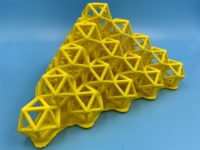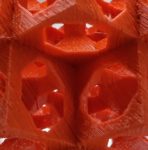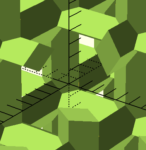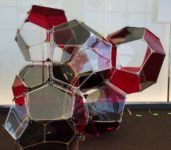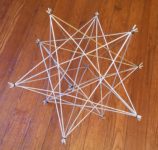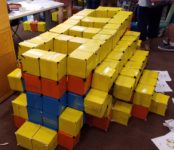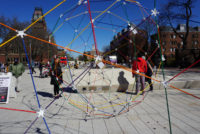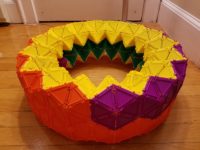Wiredodeca
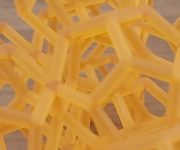
After seeing Laura Taalman’s inspiring 3d print, it occurred to me that one could also render the edge-to-edge cubical array of dodecahedra contemplated in this earlier post in an analogous way. Plus, I just received a new Prusa SL1 printer, and needed something to try it out on.
Read More

